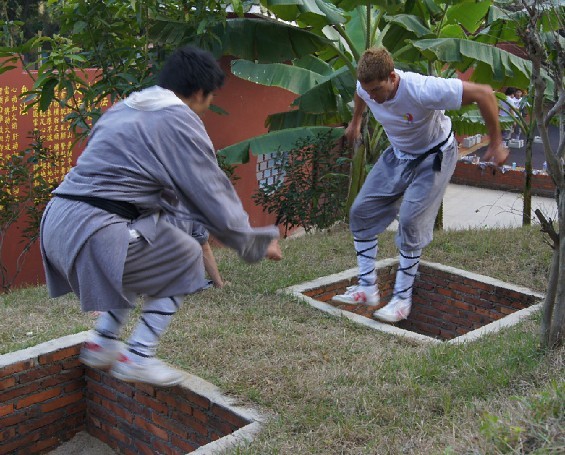- 当前位置:首页 > 传统文化 > 繁体字和简化字<<关闭窗口
-
繁体字和简化字
发布时间:2013-07-04 来源:中国南粤禅武文化网 [浏览次数:392 ]
千百年来,中国人用繁体字书写了浩如烟海的古籍,繁体字为记录历史、传播文化曾经立下过汗马功劳。
但是,笔划繁多的繁体字,难认、难记,也难于书写。因此,历史上各个时期,民间都创造了不少简体字,历代政府也不断地对汉字进行整理和规范。秦始皇推行的“书同文”,就是中国历史上第一次大规模进行的汉字整理和规范工作。从汉字几千年的发展过程可以看出,汉字演变的总趋势是简化。
简化字,是汉字中由笔划繁多的字改写成的笔划简单的字。1949年以后,为了普及教育的需要,中国政府统一对汉字进行了较大规模的简化工作,先后有2,000多个繁体字被简化字取代。 现在,简化字是联合国的工作文字之一,而在台湾、香港等地区仍然通行繁体字。
For thousands of years, Chinese people wrote with original complex Chinese characters ancient books as vast as the open sea, which rendered great service to the recording of history and the spreading of culture.
However, these characters, with many strokes, are hard to recognize, remember, and write. Thus, people created some simplified Chinese characters during each historical period, this process continued through time to sort out and regulate them. The First Emperor of the Qin Dynasty introduced shutongwena, which was the first large-scale sorting and standardization. From the development of Chinese characters for thousands of years, we can see that the overall evolving trend of Chinese characters is simplification.
Simplified Chinese characters are those with fewer strokes adapted from complex ones with many strokes. After 1949, in order to make education universal, the Chinese government simplified Chinese characters in a unified and relatively large-scale way, when more than 2,000 original complex Chinese characters were successively replaced by simplified ones.
At present, simplified Chinese characters are one of the working languages of the United Nations, while original complex ones are still in common use in Taiwan Province and Hong Kong.
【来源:中国华文教育网】
- 热门文章
-
- [2018.07.03]香港禅武堂拜访禅武国际联盟主席王德庆老师
- [2018.01.06]禅武国际联盟培养洋弟子促进中外人文交流
- [2014.03.22]禅武中心五周年邀请以及2014年办班计划
- [2015.04.11]香港惠州新动力启动与禅武中心共建禅武夏(冬)令营五周年规划
- [2013.07.03]禅武中心成为国侨办中华才艺功夫龙狮培训基地















